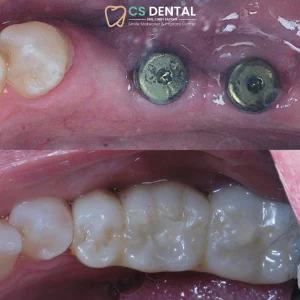Brushing your teeth may seem like a simple daily habit, but if done incorrectly, the benefits may be lost. In fact, poor brushing techniques can lead to issues like bleeding gums, tooth abrasion, and plaque buildup.
Learning how to brush your teeth properly isn’t just about frequency—it’s also about using the right technique, duration, and tools. This article offers a practical, step-by-step guide to ensure brushing becomes not just a routine, but a long-term investment in your oral health.
Our Treatments :
The Best Times to Brush Your Teeth
1. After Breakfast and Before Bed
Ideally, you should brush your teeth twice a day—after breakfast and before going to bed. Brushing before bedtime is especially important to remove food particles and bacteria that accumulate throughout the day.
2. Wait 30 Minutes After Eating
If you’ve consumed acidic foods or drinks like citrus fruits or coffee, wait about 30 minutes before brushing. This helps prevent enamel erosion, as your mouth may still be acidic right after eating.
Step-by-Step: How to Brush Your Teeth Properly
1. Choose the Right Toothbrush
Use a soft-bristled toothbrush with a small head that can reach hard-to-access areas. For a modern alternative, electric toothbrushes are an effective option.
2. Use Fluoride Toothpaste
Fluoride strengthens enamel and helps prevent tooth decay. Choose toothpaste recommended by official dental health organizations.
3. Use the 45-Degree Brushing Technique
Position the bristles at a 45-degree angle to the gum line and brush with small circular motions, using gentle pressure. Focus on all areas of the mouth: front, inner surfaces, and chewing surfaces.
4. Brush for at Least Two Minutes
Ensure you brush for a minimum of two minutes. You can use a timer or play a short song as a reminder.
5. Don’t Forget Your Tongue
Bacteria also live on the tongue and can cause bad breath. Gently clean your tongue using a tongue scraper or the back of your toothbrush.
Common Brushing Mistakes to Avoid
1. Brushing Too Hard
Many people believe brushing harder means cleaner teeth. In reality, this can wear down enamel and irritate gums.
2. Not Replacing Your Toothbrush Regularly
Replace your toothbrush every 3 months or when the bristles become frayed. A worn toothbrush will not clean your teeth effectively.
3. Skipping Night Time Brushing
Skipping brushing before bed allows bacteria to multiply overnight, increasing your risk of dental issues.
Read More : First Aid for Toothache: A Practical Emergency Guide
Extra Tips for Keeping Your Teeth Clean
1. Use Dental Floss
Flossing removes food particles between teeth that a toothbrush can’t reach.
2. Rinse with Mouthwash
Choose an antiseptic mouthwash to reduce bacteria in your mouth and keep your breath fresh.
3. Watch Your Diet
Avoid excessive sugar and sticky foods that can accelerate plaque buildup.
Practicing how to brush your teeth properly every day is a small habit that makes a big difference for long-term oral health. If you’re unsure about your brushing technique or have any dental or gum concerns, consult a professional dentist at CS Dental for personalized and effective care.
Sources :
- http://www.ada.org/resources/research/science-and-research-institute/oral-health-topics/brushing-your-teeth
- http://www.cdc.gov/oralhealth/basics/adult-oral-health/tips.html
- http://www.colgate.com/en-us/oral-health/brushing-and-flossing/how-to-brush
- http://www.healthline.com/health/how-to-brush-your-teeth
- http://www.nidcr.nih.gov/health-info/tooth-decay/more-info




